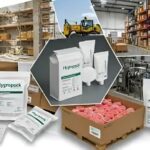Hygropack is an intelligent moisture-control packaging solution designed to safeguard sensitive goods. Whether for electronics, pharmaceuticals, food, or textiles, advanced hygropacks absorb and regulate humidity within sealed environments, ensuring products remain dry, fresh, and undamaged throughout storage and transport.
In today’s global supply chains, controlling moisture is no small matter. Packaging must withstand fluctuating climates, extended logistics chains, and varying storage conditions. That’s why hygropack has become a critical tool: small in size, yet impactful in preventing corrosion, spoilage, mold, and degradation. By integrating seamless humidity management directly into packaging and helps maintain product integrity, reduce waste, and enhance customer satisfaction.
Understanding how hygropack leverages scientific processes, from adsorption to regulated desorbance, reveals how this unassuming packet exerts powerful protection—a subject we’ll explore below.
How Hygropack Works
The Science Behind Hygropack
Hygropack utilizes materials like silica gel, calcium chloride, or specialized polymers. These are designed to attract water vapor to their surfaces—a process known as adsorption . In adsorption, molecules adhere to the surface of a material rather than penetrating it. As humidity rises, the hygropack adsorbs vapor; when humidity dips, many versions will release moisture, maintaining a stable RH.
This cyclical exchange allows hygropack to buffer humidity changes, preventing condensation, corrosion, microbial growth, and quality deterioration.
Types of Hygropack Products
Silica Gel Packs feature porous beads that adsorb moisture; they are non-toxic and easy to regenerate by heating.
Calcium Chloride Packs absorb moisture at high capacity and trap it in liquid form—ideal for shipping containers.
Polymer-Based Regulating Packs release and absorb moisture to maintain set humidity levels.
Molecular Sieve Packs employ crystalline aluminosilicates to tightly control RH—commonly used in sensitive sectors like semiconductors and pharmaceuticals.
Key Benefits of Hygropack
Hygropack delivers several advantages:
By preventing corrosion, it safeguards metal components and electronic devices from humidity-related damage.
Pharmaceutical products maintain their efficacy thanks to stabilized active ingredients within controlled environments.
Food items benefit from extended shelf life, with preserved flavor, texture, and safety.
Textiles, leather goods, and important documents are shielded from mold, unpleasant odors, and discoloration.
Its cost-effectiveness comes from minimizing waste, product returns, and compliance risks.
Many versions also promote sustainability through eco-friendly, reusable, and recyclable materials.
Applications Across Industries
Electronics and Semiconductors
Hygropack is standard in semiconductor wafer shipments and consumer electronics packaging. By regulating moisture, it avoids corrosion, short circuits, and performance degradation.
Pharmaceuticals
Many medications are moisture-sensitive. Hygropack helps maintain effectiveness, safeguards against clumping, and retains potency—especially crucial in vaccines, biologics, and sterile products.
Food and Agriculture
Using hgropack in fruit, spice, coffee, or snack packaging extends freshness and prevents spoilage. Trials show it can reduce food waste by as much as 30‑50% .
Textiles and Luxury Goods
Luxury apparel, leather goods, and collectibles benefit from hygropack’s protection against monsoons, warehouse humidity, and long-term storage issues.
Selecting the Right Hygropack
Product sensitivity (electronics vs. food)
Target humidity (30–40% RH vs. 50–60% RH)
Packaging size and seal tightness
Environmental conditions during shipping/storage
Regulatory requirements (e.g., FDA, EU food contact)
Manufacturers can customize solutions based on these factors, offering optimal protective performance at scale.
Storage and Regeneration Tips
Store packs in airtight containers, away from moisture and direct sunlight, to maintain effectiveness. To regenerate silica gel or polymer-based packs, bake at recommended temperatures until indicator beads show dryness. Calcium chloride packs typically are one-time use.
Sustainability and Cost-Effectiveness
While disposable hygropacks are low-cost, reuse and recharge options help reduce waste. Biodegradable and recyclable packaging aligns with corporate sustainability goals. The prevention of damaged goods lowers resource use, landfill contributions, and customer dissatisfaction.
Innovation and Future Outlook
Emerging developments include IoT-enhanced packs with humidity sensors, packs tailored for specific product chemistries, and fully compostable designs. The intersection of sensor technology and adsorption science promises smarter, more responsive moisture control.
Conclusion
Hygropack is a compact yet powerful solution to a pervasive problem—moisture damage. Through intelligent adsorption and regulated humidity control, it protects assets ranging from microelectronics and medications to luxury goods and perishables. With growing focus on sustainability and smart packaging, hygropack is increasingly vital in modern supply chains. By improving efficiency, reducing losses, and enabling global logistics, hygropack offers peace of mind in every seal.
ALSO READ:https://fraudes.org/best-wheel-bearing-grease/
FAQs
What is hygropack?
Hygropack is a moisture-control packaging solution that regulates humidity via adsorption and desorption to preserve product quality.
How does hygropack work?
It uses materials like silica gel and polymers to adsorb water vapor when humidity rises and can release it when levels drop, maintaining stable conditions.
What industries benefit from hygropack?
Electronics, pharmaceuticals, food, agriculture, textiles, artwork, luxury goods, and more all gain protection from humidity damage.
Is hygropack reusable?
Silica gel and certain polymer-based packs can be regenerated by heating; calcium chloride versions are usually single-use.
How do I choose the right hygropack?
Consider your product’s moisture sensitivity, required RH level, package volume, storage conditions, and any regulatory needs.
Does hygropack support sustainability?
Yes. Many variants are recyclable, reusable, biodegradable, and contribute to waste reduction—supporting green packaging initiatives.







